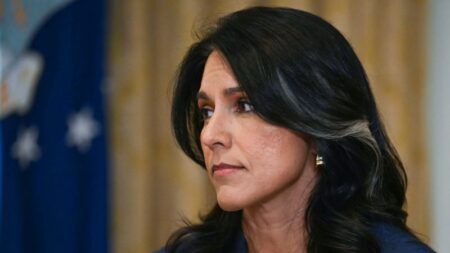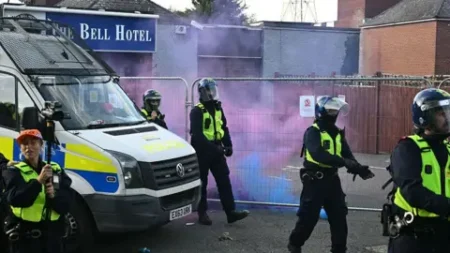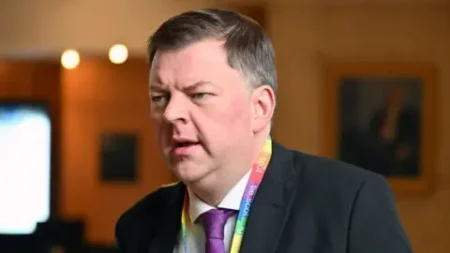Amid mounting tensions in Washington, D.C., Vice President JD Vance hosted a lunch gathering aimed at expressing gratitude towards National Guard members deployed by President Donald Trump. This event took place during a period characterized by protests that frequently interrupted the proceedings. As Vance arrived at Union Station’s Shake Shack, reactions from the crowd were mixed; he was met with applause from some and loud boos from others. Many individuals waiting in line for lunch took photos and shook hands with him, but the ambient noise escalated with demonstrators chanting “USA, USA, USA,” attempting to overshadow the Vice President’s presence.
Inside the Shake Shack, Vance was joined by Defense Secretary Pete Hegseth and White House deputy chief of staff Stephen Miller, engaging in conversation with about a dozen members of the National Guard. However, the atmosphere was not entirely welcoming, as a significant group of protesters stationed nearby began to let their voices be heard, repeatedly chanting phrases like “shame” and “we want the military out of our streets.” This displayed the stark contrast between the administration’s views and the sentiments of many local residents, who have expressed dissatisfaction with the recent federal law enforcement presence in the city.
Vance, brushing off the protestors’ chants that momentarily drowned out his comments to reporters, labeled them as “crazy” and described them, somewhat disparagingly, as “communists.” Miller joined in dismissing the demonstrators, calling them “elderly white hippies” and asserting, without providing evidence, that they were not representative of the city’s population. The Vice President reflected on his own experiences in D.C., indicating that a few years prior, he had concerns about the safety of his children due to encounters with “violent vagrants” within the city.
The interaction showcased a glaring divide between the Trump administration and a populace that largely voted against him. A Washington Post-Schar School poll indicated that approximately 80% of D.C. residents opposed Trump’s decisions to deploy federal resources such as the National Guard and the FBI to the city and take control of its police department. Despite these statistics, Vance dismissed the poll results, expressing skepticism about the narrative that the majority of D.C. residents reject enhanced public safety measures.
Customer reactions within the Shake Shack were mixed. Jay Swanson, while enjoying his meal, expressed his dislike for Vance’s presence, stating it was “disgusting” and caused him to lose his appetite. Throughout his speech, Vance highlighted concerns regarding increased visibility of “drug addicts” and the “chronically homeless” in Union Station—issues he argued detracted from the station’s potential as a communal space.
Response from the public indicated varying perspectives on the National Guard’s presence in the city. One college student characterized the atmosphere as “overwhelming,” referencing a perception that crime rates in D.C. were declining, which stood in contrast to Vance’s claims of a pervasive crime problem. This contradiction led many locals, including Democratic officials, to question the rationale behind federal intervention during a time when crime statistics suggested a decrease rather than an increase.
When pressed, Vance continued to allege that crime statistics were significantly underreported, although he failed to cite specific Justice Department information to substantiate his claims. He directed the conversation toward resident anecdotes, suggesting that personal observations reflected a deeper crime issue. Meanwhile, reports have emerged indicating that the Justice Department is currently investigating potential manipulation of crime data by the Metropolitan Police Department in D.C.
As Vance exited Shake Shack, he faced further discontent from the crowd, with a member vocalizing their disapproval through boos. He attempted to dismiss the moment with levity but was noticeably unfazed. Outside the station, smaller protest groups held their ground, demanding accountability and urging for change, epitomized by signs calling for criminals in positions of power to be held responsible.
In a developing political climate, the juxtaposition of celebratory gatherings by national officials and public dissent encapsulated the broader challenges facing the administration in Washington, D.C. Amidst these charged encounters, this story underscores the complexities of governance and public sentiment in an era marked by heightened polarization and scrutiny.











